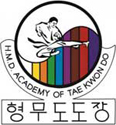Our society is currently increasing its awareness in regard to health and physical fitness. The main, and simplest, way to achieve better health is to begin a physical fitness program. Many different programs currently exist and are being created, i.e. bootcamps and extreme fitness workouts that incorporate movements from many traditional disciplines such as martial arts, yoga, and dance as well as weight training. Many of these fitness programs achieve great results and are currently quite popular.
The limitation of these programs is that they are a training program for the body and, therefore, are a short term solution. When there is no component that directly trains or relates to mental acuity and emotional balance, motivation will wane, boredom will be experienced and training will cease. The practitioner is, yet again, left searching for another ‘new’ program that will help her/him achieve her/his physical fitness goals. Worse yet is the possibility of causing long term or serious damage to the body while pushing oneself to follow these workouts. The ‘quick fix’ program simply lacks the complexity to develop the whole individual, and, by definition, will not lead to long term health.
In contrast, the HMD System guides the practitioner to a cycle of discovery that begins as a recognition of the need for physical fitness and culminates in an enhanced experience of life itself.
Our program’s foundation is development of the body’s conditioning and strength, which is achieved through the coordination of one’s mind in relation to the body, as opposed to referring to ‘coordination of the body’. This is an important distinction to understand because it leads to the mind’s full awareness of the body. Learning martial arts is mindful; it requires new synaptic patterns to be developed in the brain which leads to a higher sensitivity level of oneself and one’s surroundings.
After one’s physical foundation is set, our training method then transitions into partner interaction. The partner interaction has a specific purpose: the experience of ‘mindlessness’ also referred to as ‘Moo Shim or no mind’, ‘combat mindset’, and ‘being in the zone’.* This concept is a mental state characterized by the synergy of thought and action which allows the practitioner to perform devoid of emotional prejudice (fear, anxiety, or excitement). It is performance at an ‘instinctual’ level where direct thought is too slow.
Partner interaction is the highest level of performance. If we learn to become ‘mindful’ in our individual practice, we become ‘mindless’ when interacting with a partner. We can understand this statement because we are social beings. We partner and interact at all levels in order to achieve this optimal experience, whether academic, social, and/or professional. We understand it so intrinsically, that we seek a friend to exercise with in the hopes that we will motivate each other during times of mental exhaustion. Facebook and other social media are huge new industries based on our need to socialize. All of our interactions are undertaken in the hope of achieving an optimal experience.
Furthermore, the HMD System develops your personal skills and is, thus, a unique study of yourself. As such, it is inherently motivating. Your practice and training will change, transform and transition along with you, based on factors such as age, marital status, having children, transitioning to a new job or career and any other natural life change. As you become more sensitive to your physical, mental and emotional states, you will become more active in creating the path you want your life to follow.
* Michael Jordan described it as "being in the zone". For a lengthy explanation and review, please read FLOW: The Psychology of Optimal Experience by Mihaly Csikszentmihalyi
